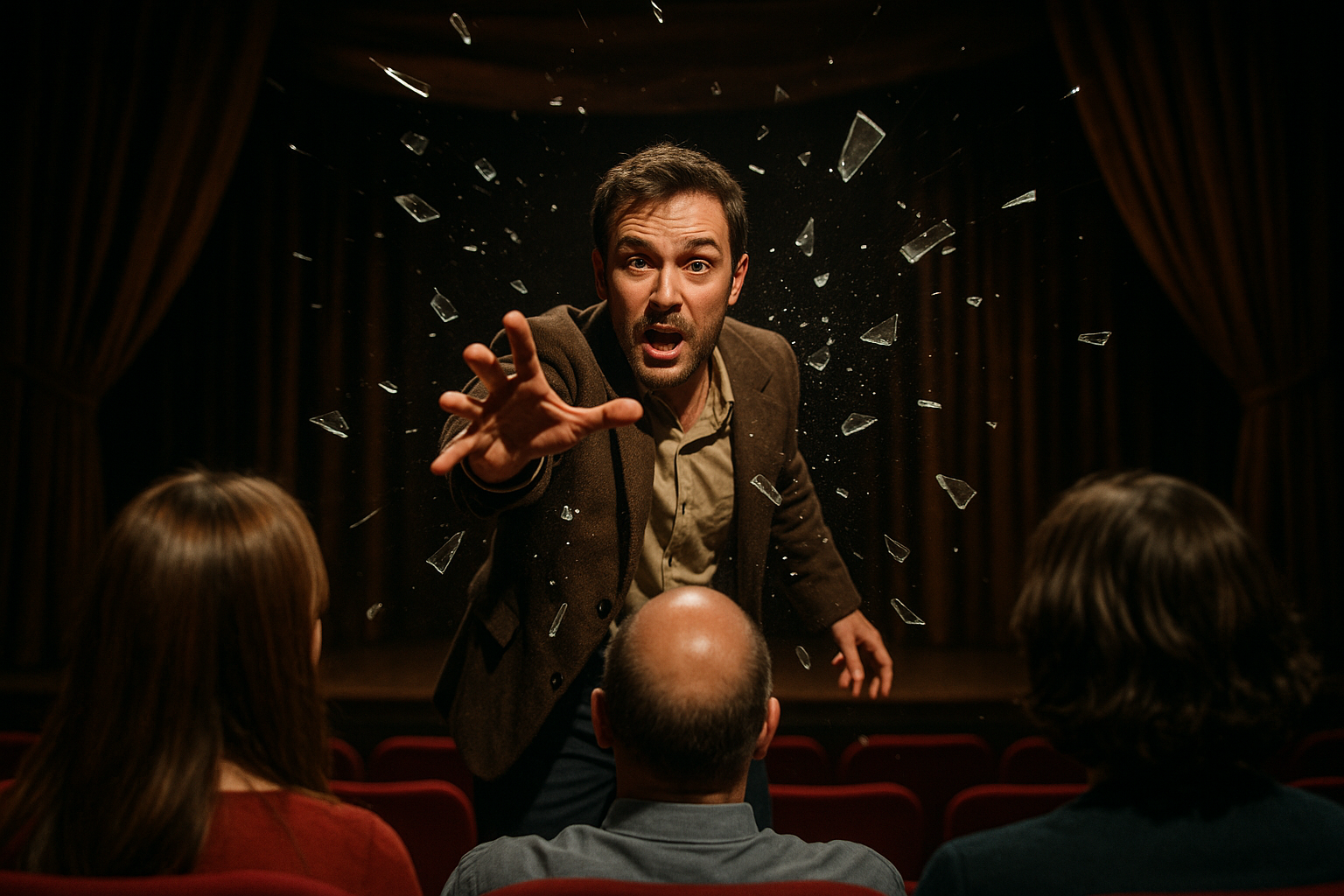Breaking the Fourth Wall: Shattering the Barrier Between Actors and Audience
Innovation in the world of theatre is often a gradual process, with trends and movements taking years to gain traction and reshape the landscape. However, one method of audience engagement has been repeatedly revisited, effectively breaking the traditional mould of theatre: the technique of breaking the fourth wall. This article delves into the historical context, current developments, and overall impact of this unique artistic concept.

A Historical Perspective: The Fourth Wall
The term “fourth wall” originated in the 19th century, reflecting the imaginary boundary between the stage and the audience in a traditional three-walled box set in a proscenium theatre. Breaking this wall, where actors directly engage or acknowledge the audience, was initially a radical concept. It was often used in comedies to enhance the entertainment factor.
Shattering the Barrier: Modern Usage
Today, breaking the fourth wall has evolved beyond mere comic relief. It has become a powerful tool for creating an intimate connection between performers and the audience. Netflix’s popular series ‘House of Cards’ frequently employed this technique, with the main character speaking directly to the viewers, creating an unsettling intimacy that emphasized the show’s dark political themes.
Impact and Reception: Breaking Boundaries
The impact of breaking the fourth wall is profound. It not only redefines the audience’s role from passive spectators to active participants but also adds depth to the narrative. It intensifies the emotional connection between the audience and the performance, often leading to more profound engagement and understanding. However, the technique’s reception varies; while some laud it for its innovative engagement, others find it disconcerting and disruptive to their traditional viewing experience.
Research Insights: The Fourth Wall in Contemporary Theatre
Recent studies reveal an increasing trend of breaking the fourth wall in modern theatre, reflecting a shift towards more immersive and interactive experiences. This technique is particularly effective in creating a sense of shared reality, blurring the lines between performance and reality.
The Future: Beyond the Fourth Wall
As traditional boundaries in art continue to blur, breaking the fourth wall seems poised to become even more prevalent in the future. As theatre continues to evolve and adapt to the changing times, the fourth wall’s shattering promises to redefine the relationship between performers and the audience in exciting and innovative ways.
Breaking the fourth wall has grown from a simple comedic tool to a powerful method for engaging audiences in a more immersive, interactive experience. As this trend continues to gain traction, it will be fascinating to see how it further evolves and impacts the world of theatre.




